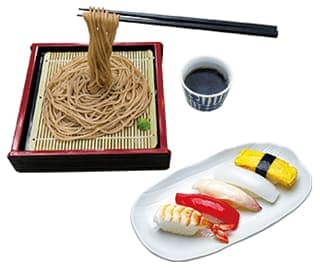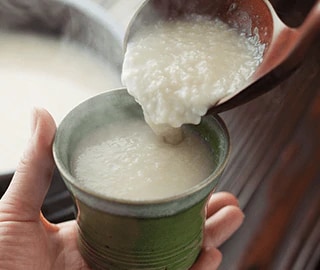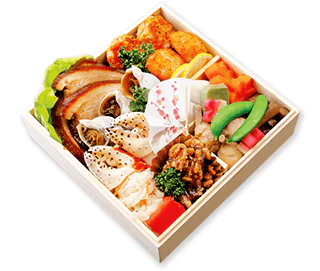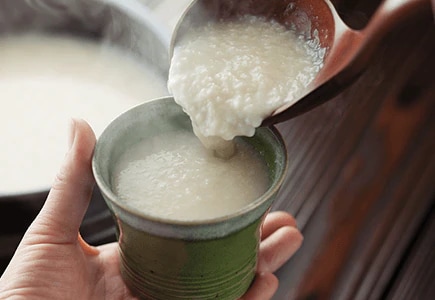
A traditional Japanese drink, sweet amazake is made from fermented rice. This creamy white beverage is traditionally prepared by adding water and malted rice to cooked rice, before storing it at about 60°C (140°F). Aspergillus mold decomposes and saccharifies the rice starch, which produces amazake’s natural sweetness. Amazake literally means “sweet liquor,” however, the traditional type made from cooked rice and malted rice has an alcohol content of less than one percent. This beverage has been around for centuries: it was sold on streets year-round during the Edo period (1603- 1867), and was particularly enjoyed as a restorative against fatigue on hot summer days. These days, warm amazake is more commonly served at temples and shrines during New Year’s to visitors hoping to ward off the chill of winter.
Amazake is popular among the health-conscious
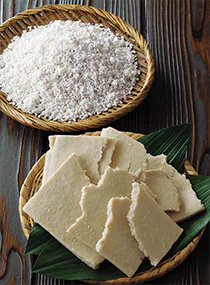
and sake lees
There are essentially two kinds of amazake. The traditional type is made from cooked rice and malted rice; the other is prepared by dissolving sakekasu (sake lees) in hot water then adding sugar. Today, most amazake falls into the former category; some of these contain both malted rice and sake lees to improve palatability, while others have added salt—and so the taste of amazake differs, depending on the manufacturer. In recent years amazake has gained popularity among the health-conscious, as its beneficial nutrients are composed of essential amino acids, glucose, B vitamins, dietary fiber and oligosaccharides. Some amazake is blended with cereals, banana, citrus or apple; it can be found canned, bottled, in cartons or freeze-dried. The broad range of amazake foods on the market includes amazake-flavored soymilk, ice cream and candies, as well as bread made with amazake. Amazake is also a healthy alternative to sugar, and has found popularity as an additive to seasonings such as dressings, sauces and soups, as well as cakes, cookies and jellies.

